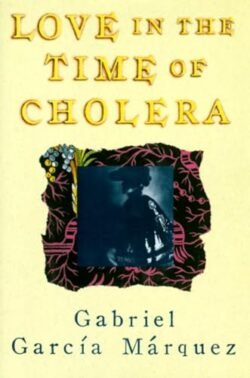“Love in the Time of Cholera” by Gabriel García Márquez, first published in 1985, is a masterpiece of magical realism that explores themes of love, desire, and aging over a span of fifty years. Set in an unnamed Caribbean seaport city, the novel tells the story of the long, unrequited love between Florentino Ariza and Fermina Daza. Florentino falls deeply in love with Fermina in their youth, but she eventually marries a wealthy doctor, Juvenal Urbino, instead. The novel follows their lives through the decades, detailing Florentino’s numerous romantic encounters and his unwavering devotion to Fermina, culminating in their reunion in old age after Urbino’s death.
Themes and Analysis
- Florentino Ariza: Florentino Ariza is characterized by his romantic idealism and obsessive love for Fermina Daza. Despite being rejected, he vows to remain faithful to her, engaging in various affairs yet holding onto the promise of his youthful love. His life is marked by his poetic view of love and his determination to wait for the chance to be with Fermina again.
- Fermina Daza: Fermina Daza is initially drawn to Florentino's passionate advances but ultimately chooses stability and social status in her marriage to Juvenal Urbino. Her character is strong-willed and practical, yet as she ages, she reflects on her choices and the meaning of love and companionship.
- Juvenal Urbino: Dr. Juvenal Urbino, Fermina's husband, is a symbol of modernity and progress in the city. His marriage to Fermina is characterized by mutual respect and affection, but it lacks the passionate intensity of Florentino's love. Urbino's death sets the stage for the novel's conclusion and the possibility of a second chance for Florentino and Fermina.
Themes and Analysis
- The Nature of Love: The novel presents a complex exploration of love's many forms, from youthful passion to marital companionship, and questions the nature of true love and fidelity.
- Time and Memory: García Márquez examines how time affects characters' perceptions and emotions, exploring themes of memory, aging, and the inevitability of death.
- Social Class and Progress: The backdrop of the changing seaport city reflects the tensions between tradition and modernity, and the impact of social class on characters' lives and relationships.
“Love in the Time of Cholera” is a poignant meditation on the enduring power of love, masterfully blending the real with the magical. Gabriel García Márquez’s lyrical prose and richly drawn characters create a vivid tapestry of life’s complexities, making it a landmark novel in world literature. The book’s exploration of love’s many facets, coupled with its deep humanity and understanding of the human heart, continues to resonate with readers around the world, cementing its status as a timeless classic.
If the summary caught your interest,
Consider reading the full book on AbeBooks.
Explore this book on AbeBooks
